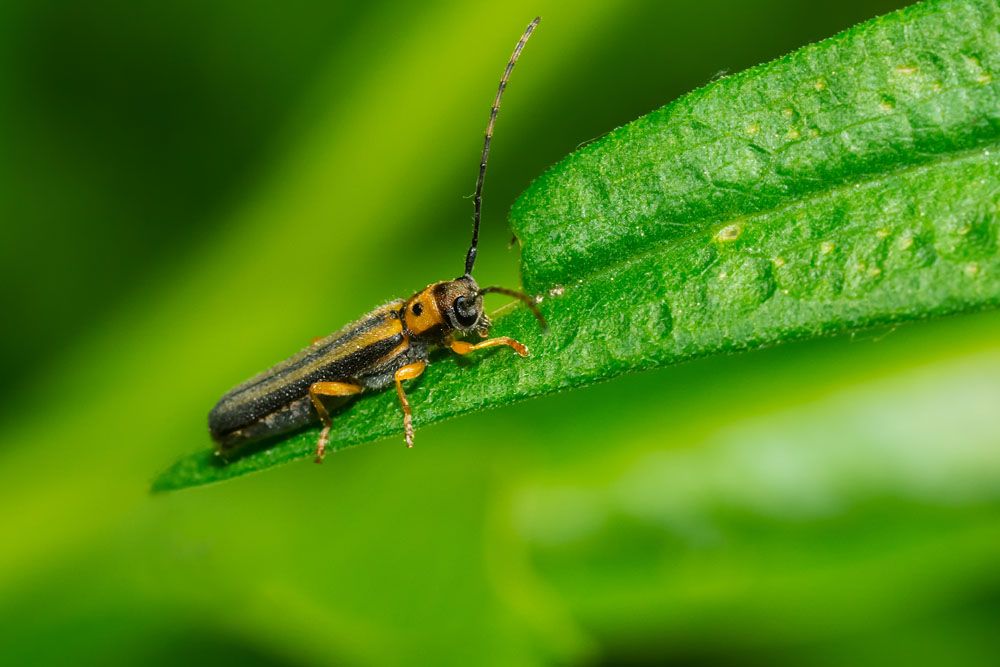
Dogwood Twig Borer – Oberea tripunctata
Dogwood Twig Borer (Oberea tripunctata)
Latin Name: Oberea tripunctata
Common Name: Dogwood Twig Borer
Appearance:
- The dogwood twig borer, Oberea tripunctata, is a 1/2 to 5/8 inch long, slender, long-horned beetle that arises from broken dogwoods in late spring after the new growth has developed somewhat.
- Beetles lay an egg in the bark every 1/8 inch between these rows of holes. This egg matures in a few weeks, and a skinny, white grub hatches and begins feeding within the stem.
- The stem dies and wilts above the region encircled by the beetle as the grub bores downward. Sawdust and other waste items were pushed out of holes along the stem by the larvae.
- The grub develops to approximately 7/8 inch in length and spends the winter in a cell dug within the twig.
Host plants:
Dogwood, viburnum, elm, sourwood, blueberry, rhododendron, azalea, laurel, poplar, willow, mulberry, rhododendron, although dogwood is preferable, elm is frequently attacked.
Territory:
The dogwood twig borer is distributed in the United States of America
Damage caused by Dogwood Twig Borer:
The dogwood twig bore beetle attacks the bark of fresh-faced shrubs and trees during the spring and summer months. Adults bore down the cores of twigs toward the main stem, creating rows of little holes in the bark along with the twigs at regular intervals. Because the beetle normally starts by attacking individual twigs, withering leaves on twigs and drooping and girdling of twig tips are signs of a dogwood twig bore infestation. Adults eat the leaves, leaving elongate circular holes along the veins. In Minneapolis in the early 1900s, this borer caused the premature shedding of leaves and twigs of street elm to the point that it appeared that fall had arrived early.
Life history and Habits:
Dogwood twig borer adults emerge in early June, rarely in large numbers. They gnaw on dogwood twigs, causing girdling around branch tips. Females deposit their eggs on healthy twigs in singles. Larvae penetrate the twig and bore down towards the center after the eggs hatch. Internally, parts of the twig are occasionally separated from the dogwood by drilling a series of closely-spaced holes to remove the boring dust (frass). Beetle larvae spend the winter in the stems. Some larvae can live for up to two years after hatching. Pupae develop from the stem in the spring between the middle of May and the beginning of June. Elm twig girdlers are another name for dogwood twig borer larvae.
